 Approximately 70,000 Brazilians–including President Dilma Rousseff–turned out last Sunday for the beatification of Sr. Dulce Lopes Pontes (1912-92), who served the poorest of the poor in Salvador da Bahia, Brazil.
Approximately 70,000 Brazilians–including President Dilma Rousseff–turned out last Sunday for the beatification of Sr. Dulce Lopes Pontes (1912-92), who served the poorest of the poor in Salvador da Bahia, Brazil.
Sr. Dulce (baptized Maria Rita) entered the Missionary Sisters of the Immaculate Conception of the Mother of God at the age of 18.
One of the inspirations for her vocation was the life of St. Thérèse of the Child Jesus. “I think I am like the little love of my small heart, that no matter how much love it has, it is little for such a great God,” wrote Sr. Dulce upon her entrance into religious life. “I think that the Child Jesus is pleased with all little acts of love no matter how small they are.”
She founded the Obras Sociais Irma Dulce, or in English, “The Charitable Works Foundation of Sister Dulce,” as the umbrella-organization for her amazing outreaches to the poor and needy. She was absolutely beloved by the Brazilian people, who sometimes called her “the Angel of Bahia.” Toward the end of her life, she was even nominated for a Nobel Peace Prize.
The presider at the beatification was Brazilian Cardinal Dom Geraldo Agnelo. Those unable to attend the event were able to watch the nationally televised ceremony from home.
The miracle for her beatification occurred in 2001, when Cláudia Cristiane Santos, now 42, survived an uncontrolled hemorrhage after giving birth. The bleeding continued despite three operations. Doctors lost all hope that she would survive, but when her family sought the intercession of Sr. Dulce, the bleeding stopped immediately.
Th miracle further confirmed Sr. Dulce’s virtuous life, centered on prayer and charity in little things. “Love overcomes all obstacles, all sacrifices,” she used to say.
For more news reports on the beatification of the “Angel of Bahia,” check out these articles from AFP, CathNews India, and The Pilot.
Like this:
Like Loading...
 The Diocese of Marquette, serving Michigan’s Upper Peninsula (“UP”), recently produced an outstanding 15-minute documentary on vocations, especially to diocesan priesthood, entitled “Answering the Lord’s Call.” This program aired at various times this past weekend on local television networks, and it may be viewed online.
The Diocese of Marquette, serving Michigan’s Upper Peninsula (“UP”), recently produced an outstanding 15-minute documentary on vocations, especially to diocesan priesthood, entitled “Answering the Lord’s Call.” This program aired at various times this past weekend on local television networks, and it may be viewed online.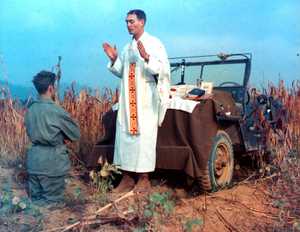
 Approximately 70,000 Brazilians–including President Dilma Rousseff–turned out last Sunday for the beatification of Sr. Dulce Lopes Pontes (1912-92), who served the poorest of the poor in Salvador da Bahia, Brazil.
Approximately 70,000 Brazilians–including President Dilma Rousseff–turned out last Sunday for the beatification of Sr. Dulce Lopes Pontes (1912-92), who served the poorest of the poor in Salvador da Bahia, Brazil. The online edition of
The online edition of 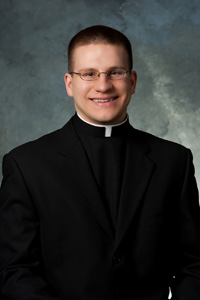 Phillip Owen, 26, says he has always felt the Blessed Mother watching over him. Born and raised in St. Luke Parish in River Forest, Owen is the eighth of 10 children in his family. The experience of growing up in a large family served him well, he said. “I learned at an early age what it meant to sacrifice, share with others, and be generous with my time,” he said. “My parents instilled in me the importance of sharing with others, being respectful of others, the importance of Sunday Mass, and the importance of daily prayer.”
Phillip Owen, 26, says he has always felt the Blessed Mother watching over him. Born and raised in St. Luke Parish in River Forest, Owen is the eighth of 10 children in his family. The experience of growing up in a large family served him well, he said. “I learned at an early age what it meant to sacrifice, share with others, and be generous with my time,” he said. “My parents instilled in me the importance of sharing with others, being respectful of others, the importance of Sunday Mass, and the importance of daily prayer.” A
A  Our readers are encouraged to visit the the
Our readers are encouraged to visit the the 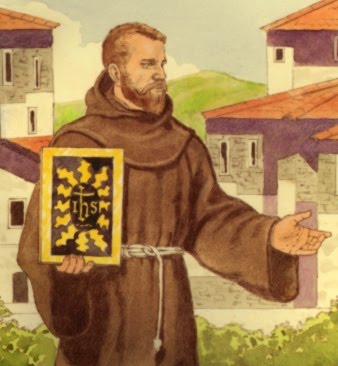 Today the Church celebrates the feast day of St. Bernardine of Siena. As a child in Southern California, I never heard about St. Bernardine, though the nearby city of San Bernardino (my brother called it “San Ber-doo”) was named after him. I only later learned that this 15th-century Franciscan priest was quite a dynamic evangelist and preacher.
Today the Church celebrates the feast day of St. Bernardine of Siena. As a child in Southern California, I never heard about St. Bernardine, though the nearby city of San Bernardino (my brother called it “San Ber-doo”) was named after him. I only later learned that this 15th-century Franciscan priest was quite a dynamic evangelist and preacher.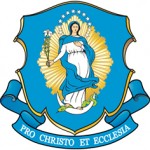 Check out this inspiring, new vocations video from the Marian Fathers, courtesy of
Check out this inspiring, new vocations video from the Marian Fathers, courtesy of 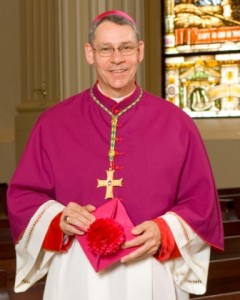 I was delighted to see that our friends at the
I was delighted to see that our friends at the